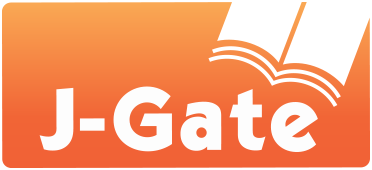The Implementation of Blended Learning for English Courses at Higher Education in Vietnam: Teachers’ Perceptions
DOI:
https://doi.org/10.54855/acoj.241511Keywords:
Blended Learning, CALL, moodle, higher education, online learningAbstract
Advancements in technology and the Internet characterize the current English teaching and learning scenario. In this trend, the issue of blending face-to-face and online learning into English learning and teaching has drawn significant attention from teachers, researchers, and educators worldwide, including Vietnam, especially after the COVID-19 pandemic. Although this mode has been applied widely and shown its noticeable benefits, there have been relatively few studies regarding the perceptions of English lecturers at the tertiary level in English as a Foreign Language (EFL) context. Therefore, the objectives of this research are to (1) critically review knowledge of blended learning (BL); (2) investigate the tertiary level English lecturers’ perceptions of the BL model implementation in a college in Ho Chi Minh City, Vietnam; (3) provide some practical recommendations for future research and implementations. Online questionnaires and interviews with 14 English lecturers in the Summer 2023 semester were used to collect qualitative and quantitative data. At the end of the paper, EFL lecturers’ perceptions were revealed. Several educational implications and practical recommendations were suggested as well. The research findings are expected to contribute to a complete picture of BL in higher education in Vietnam.References
Allan, B. (2007). Blended learning: Tools for teaching and training. Facet Publishing.
Anh, T. L., Dung, T. T., Ha, N. M., & Ngoc, N. M. (2022). Language-majored students’ perception of Blended learning at a university in Vietnam. Proceedings of the AsiaCALL International Conference, 1(2012), 30–45.
Bates, A. W. (2015). Teaching in a digital age: Guidelines for designing teaching and learning. BCcampus.
Cao, T. X. L. (2022). Language Teachers’ Perception and Practice of Adopting Blended Learning to Adapt to the New Normal. AsiaCALL Online Journal, 13(5), 29–45.
Creswell, J. W. (2012). Educational Research: Planning, Conducting, and Evaluating Quantitative and Qualitative Research. Pearson Education. https://www.pearson.com/us/higher-education/product/Creswell-Educational-Research-Planning-Conducting-and-Evaluating-Quantitative-and-Qualitative-Research-4th-Edition/9780131367395.html
Dao, V. T. H., Do, Q. H. M., Pham, A. M., Van, T. T. N., & Nguyen, T. T. T. (2021). Prospects of Blended Learning Implementation at FPT University Can Tho, Vietnam. Vietnam Journal of Education, 5(3), 43–53. https://doi.org/10.52296/vje.2021.101
Dörnyei, Z., & Taguchi, T. (2009). Questionnaires in second language research: Construction, administration, and processing. Routledge.
Graham, C. R. (2006). Blended learning systems. The Handbook of Blended Learning: Global Perspectives, Local Designs, 1, 3–21.
Hanh, T. T. M. (2022). The Role Of The Blended Learning Model In University Education In Vietnam Today. Tạp Chí Khoa Học Trường Đại Học Mở Hà Nội.
Harmer, J. (2015). The Practice of English Language Teaching (5th Edition). Pearson Education. https://books.google.com.vn/books?id=Bbf2sgEACAAJ
Hockly, N., & Clandfield, L. (2010). Teaching online: Tools and techniques, options and opportunities. Delta Publishing Stuttgart.
Hockly, N., & Dudeney, G. (2018). Online Language Learning. In The Cambridge Guide to Learning English as a Second Language (p. 327). Cambridge University Press.
Huy, C. V., Luong, N. T., & Vu, N. N. V. (2020). Blended learning in badminton training for professionals: students. European Journal of Physical Education and Sport Science, 6(6), 28–36. https://doi.org/10.46827/ejpe.v6i6.3226
Ibrahim, S., & Ismail, F. (2021). University ESL Instructors’ Reflections on the Use of Blended Learning in their Classrooms. TESOL and Technology Studies, 2(1), 25–35. https://doi.org/10.48185/tts.v2i1.117
Le Thai Hung, Nguyen Thi Phuong Vy, & Ha Vu Hoang. (2023). The Effectiveness of Blended Learning Activitities at Higher Education: Experiences from VNU - University of Education. Khoa Học Quản Lý Giáo Dục, 01(37), 66–75.
Lewis, G. (2017). Learning technology. Oxford University Press.
Mackey, A., & Gass, S. M. (2015). Second language research: Methodology and design, second edition. Second Language Research: Methodology and Design, Second Edition, 1–434. https://doi.org/10.4324/9781315750606/SECOND-LANGUAGE-RESEARCH-ALISON-MACKEY-SUSAN-GASS
Pham, P.-T., Nguyen, M.-T., Nguyen, T.-H., Nguyen, M.-T., Yen, D. T. H., Ho, T.-Q., Le, K.-A., & Nguyen, D.-B. (2021). Blended Learning in Action: Perception of Teachers and Students on Implementing Plended Learning in Ctu. Multicultural Education, 7(4), 379–385. https://doi.org/10.5281/zenodo.4728153
Phuong, H. Y., Huynh, C. M. H., & Huynh, M. H. (2022). Teachers’ Perceptions Toward Blended Teaching Applied in Efl Classroom. European Journal of Open Education and E-Learning Studies, 7(2), 145–160. https://doi.org/10.46827/ejoe.v7i2.4477
Reinders, H. (2012). Online and blended instruction. The Cambridge Guide to Pedagogy and Practice in Second Language Teaching, 287–294.
Roblyer, M. D. (2016). Integrating Educational Technology into Teaching, New Jersey, pearson Education.
Staker, B. H., & Horn, M. B. (2012). Classifying K – 12 Blended Learning. May.
Stein, J., & Graham, C. R. (2014). Essentials for blended learning: A standards-based guide. Routledge.
Sulistiyo, U., Al Arif, T. Z. Z., Sulistiyo, U., Handayani, R., Ubaidillah, M. F., & Wiryotinoyo, M. (2022). Determinants of Technology Acceptance Model (TAM) Towards ICT Use for English Language Learning. Journal of Language and Education, 8(2), 18–31. https://doi.org/10.17323/jle.2022.12467
Tang, S. M., & Tien, H. N. (2020). Digital Transformation Trend in Vietnam Higher Education: Blended Learning Model. International Journal of Social Science and Economics Invention, 6(07), 304–309. https://doi.org/10.23958/ijssei/vol06-i07/218
Thi Thao Nguyen, H., Sivapalan, S., Hung Hiep, P., Van Anh, P. T., & Thi Mai Lan, N. (2021). Teaching English as a Second Language in Vietnam: Transitioning from the Traditional Learning Approach to the Blended Learning Approach. SHS Web of Conferences, 124, 01003. https://doi.org/10.1051/shsconf/202112401003
Tran, T. D., & Nguyen, M. N. A. (2023). Perceptions and Attitudes towards Blended Learning for English Courses: A Case Study of English-majored Students at Thu Dau Mot University. AsiaCALL Online Journal, 14(1), 40–60. https://doi.org/10.54855/acoj.231414
Vu, N. N., Due, V. T. M., Luong, N. T., & Lien, N. T. H. (2022). Blended Online EFL Activities in MOODLE for Higher Education. Proceedings of the 18th International Conference of the Asia Association of Computer-Assisted Language Learning (AsiaCALL–2-2021), 621, 145–156. https://doi.org/10.2991/assehr.k.211224.015
Downloads
Published
How to Cite
Issue
Section
License
Copyright (c) 2024 Dinh Tran Thuy-Lieu, Tran Xuan Trang, Le Thi Huyen Trang, Pham Huynh Thuy Uyen

This work is licensed under a Creative Commons Attribution 4.0 International License.
License
Authors retain copyright and grant the journal the right of first publication with the work simultaneously licensed under a Creative Commons Attribution 4.0 International License that allows others to share the work with an acknowledgment of the work's authorship and initial publication in this journal.
Authors are able to enter into separate, additional contractual arrangements for the non-exclusive distribution of the journal's published version of the work (e.g., post it to an institutional repository, in a journal or publish it in a book), with an acknowledgment of its initial publication in this journal.
Authors are permitted and encouraged to post their work online (e.g., in institutional repositories or on their website) prior to and during the submission process.
Copyright
The copyright of all articles published in the acoj remains with the Authors, i.e. Authors retain full ownership of their article. Permitted third-party reuse of the open access articles is defined by the applicable Creative Commons (CC) end-user license which is accepted by the Authors upon submission of their paper. All articles in the acoj are published under the CC BY-NC 4.0 license, meaning that end users can freely share an article (i.e. copy and redistribute the material in any medium or format) and adapt it (i.e. remix, transform and build upon the material) on the condition that proper attribution is given (i.e. appropriate credit, a link to the applicable license and an indication if any changes were made; all in such a way that does not suggest that the licensor endorses the user or the use) and the material is only used for non-commercial purposes.











